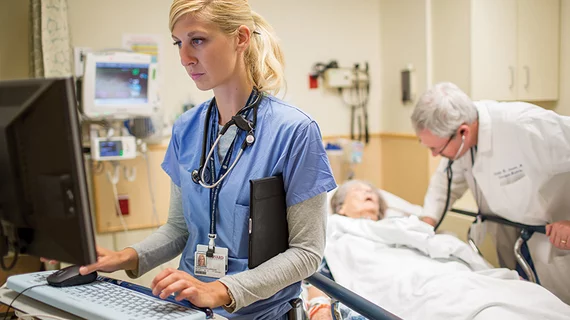Do non-physician providers request contrast-enhanced imaging more often?
The growing presence of non-physician practitioners (NPPs) has created an increased demand for contrast-enhanced imaging, according to new data released in December 2022.
As the healthcare industry continues to recover from the iodinated contrast shortage that occurred in the spring of 2022, experts are leaving no stone unturned when it comes to developing strategies to avoid such a dire situation in the future. Researchers have analyzed everything from exam protocols to contrast substitutes, the utility of multi-dose bottles and beyond; now their attention has shifted to the ordering providers themselves.
A recent paper published in the Journal of the American College of Radiology details researchers’ efforts to understand the imaging ordering habits of physicians and NPPs. They used the Medicare Physician/Supplier Procedure Summary (PSPS) Limited Data Set for the years of 2011 to 2020 to analyze all Medicare fee-for-service claims each of these years.
To no surprise, the data reiterated the growing role of NPPs in patient management. When focusing specifically on how this affects contrast utilization, the experts found that the increased presence of NPPs has resulted in a 4.5% relative increase in contrast utilization.
According to the data, NPPs most often request contrast-enhanced CT studies in outpatient hospital, inpatient hospital and office settings, but their rates of utilization are not significant in ED settings. In comparison to their peers, NPPs have increased rates of sending office-based patients for contrast-enhanced chest imaging and are also more likely to request abdomen/pelvis CTs on inpatient individuals.
Identifying these patterns is an important step in optimizing contrast use, corresponding author of the paper Eric W. Christensen, PhD, Director of Economic and Health Services Research at Harvey L. Neiman Health Policy Institute, and colleagues explained.
“These results indicate the importance of recognizing variation in care patterns among groups of ordering practitioners, particularly during an acute crisis when institutions potentially need to ration their contrast media supplies, and even a small variation in contrast media ordering patterns can have high impact,” noted the experts.
The authors suggested that these findings further emphasize the need for streamlined systems that ensure the appropriateness of not just imaging exam requisitions, but the appropriateness of contrast utilization as well. They noted that this is especially important amid the growing presence of NPPs in primary and specialty care.
Learn more here.

